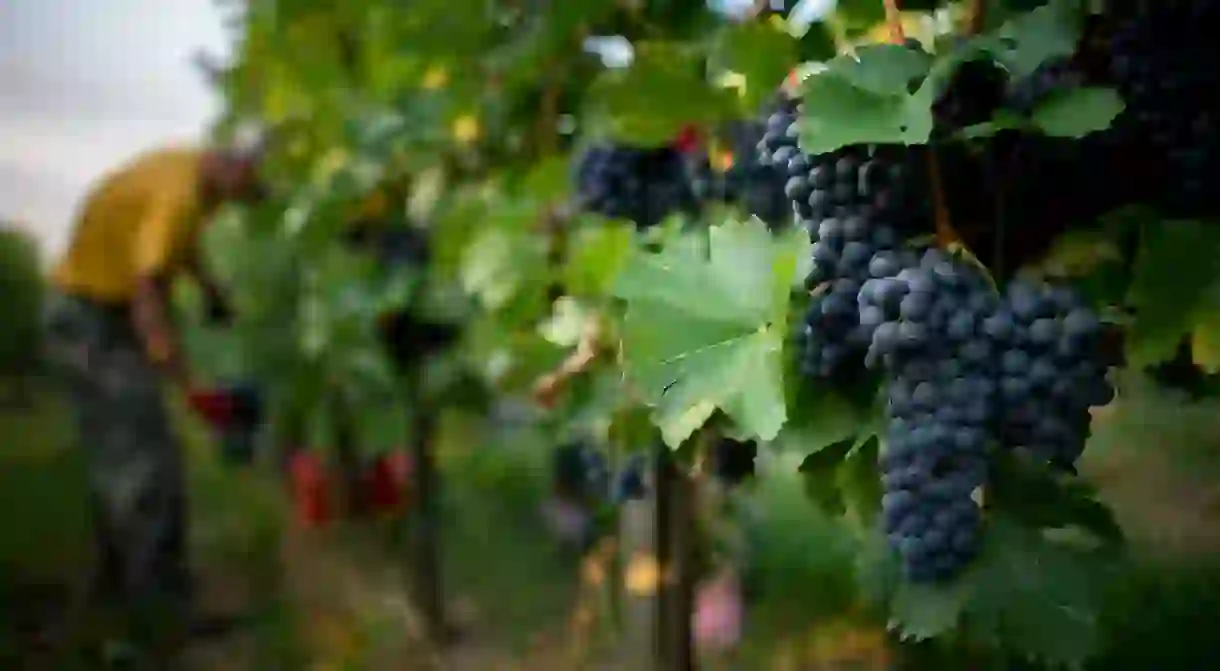A Wine Lover’s Guide to Hungary’s Wine Regions

Though much of it doesn’t make it beyond the country’s own borders, Hungary’s wine production is something its populace is incredibly proud of, and rightfully so. The country has a long history of producing wines, and a number of key regions each have their own distinct variations. Here’s your essential guide.
Tokaj

By far and away the most famous of Hungary’s wines is tokaji, one of the few names that even amateur connoisseurs outside of the country will already have heard of. While the dry white furmint is one option from the region – which is situated in the northeast corner of Hungary – it’s actually the tokaji aszú (pronounced toe-ky-ee oh-sue) that is most famous.
This incredibly sweet dessert wine comes with a golden colour and has been around for centuries, the region building up quite an infrastructure for wine production as a result. King Louis XIV is believed to have described aszú as the “vinum regum, rex vinorum” (“wine of kings, king of wines”), a line that has stuck as the wine’s slogan.
In fact, tokaji aszú was the first rot wine, with the nearby rivers of the Tisza and Bodrog helping to create the necessary moisture that causes the grapes to botrytise – a rotting that dehydrates the grapes but concentrates their sugar levels, contributing to the uniquely sweet taste.
Eger

Although not as well known globally as tokaji, Eger wine is often recommended by Hungarians to newcomers. The region itself is located east of Budapest and home to a quaint city that shares the name.
Eger is typified by its cuvée wines, either of its red or white variety. It’s the red, however, and more specifically the egri bikavér (egg-ree bih-kah-vair) that stands out as the favourite. Meaning ‘bull’s blood’ in Hungarian, bikavér wines are very full-bodied, deep and even spicy, and are required to be made with a blend of at least 50 percent grapes native to the area.
Its white wine isn’t quite as popular but it’s still worth hunting down, especially if rich reds aren’t your barrel. Egri csillag (egg-ree chi-log) is a particular highlight, and offers up a very crisp, flavoursome drink best served to combat the heat of summer.
Szekszárd

Nowadays Szekszárd is as popular for its ability to take on French wines after planting and producing grapes of cabernet sauvignon, merlot and more, but for Hungarian wines it’s a region typified by a wide selection of reds – and some would argue the best in the country.
There is a bikavér available, and in fact Szekszárd is the only other region in the country allowed to use the name since it was, in fact, trademarked here before it became an Eger brand. It is the kadarka grape, however, that steals the show in Szekszárd.
It produces an intensely dark, aromatic wine that is easily identifiable, but surprisingly rare. The sensitive grape had been all but replaced by the much simpler to produce kékfrankos years earlier, meaning the kadarka is limited to only a handful of wineries and fewer still vintages. The result is worthwhile, however, requiring much longer in the bottle but producing something special as a result.
Villány

Close to the border of Croatia, Villány enjoys a considerably warmer, more Mediterranean climate. As such, it’s particularly good for growing and tending to grapes for wines.
Though there are some distinctive whites on offer here, it’s primarily the reds it is famous for. There are tipples from the kékfrankos and portugieser grapes, which are native to the volcanic soil here and have been producing some great vintages for years. One of the country’s most renowned wineries, Bock, is based in this region.
One of the reasons for Villány’s recent popularity, however, is its focus on French grapes, particularly merlot, pinot noir, sauvignon blanc and cabernet. The fact that it’s some of the best wine in the country might do a disservice to Hungary’s wines from native grapes, but it is in fact a celebration of the region’s perfect position for producing extremely fine drinks.
Lake Balaton

Considering the large expanse that is Lake Balaton, it’s perhaps no surprise that this region of wine production includes quite a number of towns and locations, each with their own distinct variations. Primarily these are Csopak, Badacsony, Balatonboglár and Balaton-felvidék.
The Balaton region itself is primarily notable for its whites, everything from riesling to champagnes are produced here, and there are some really exceptional options on offer. But the Hungarian specialities from Balaton share the same characteristics as most Magyar wines, a full-bodiedness with a hint of spice.
But if you want something truly special then consider the kéknyelű or the bakator varieties, both grapes that were very nearly wiped out, with the latter even having only seven stalks left before replanting began. Nowadays both varieties cover many more acres, and while it likely won’t compete with the more popular brands the world over, you will at least get something unique from wine made of this.
Kéknyelű provides a much more smoky flavour thanks to the basalt in the soil that it’s grown in, while bakator produces a much darker wine that can also be found in a red variety. They’re true Hungarian exclusives so perhaps not to everyone’s palate, but something that real connoisseurs will want to hunt down.













